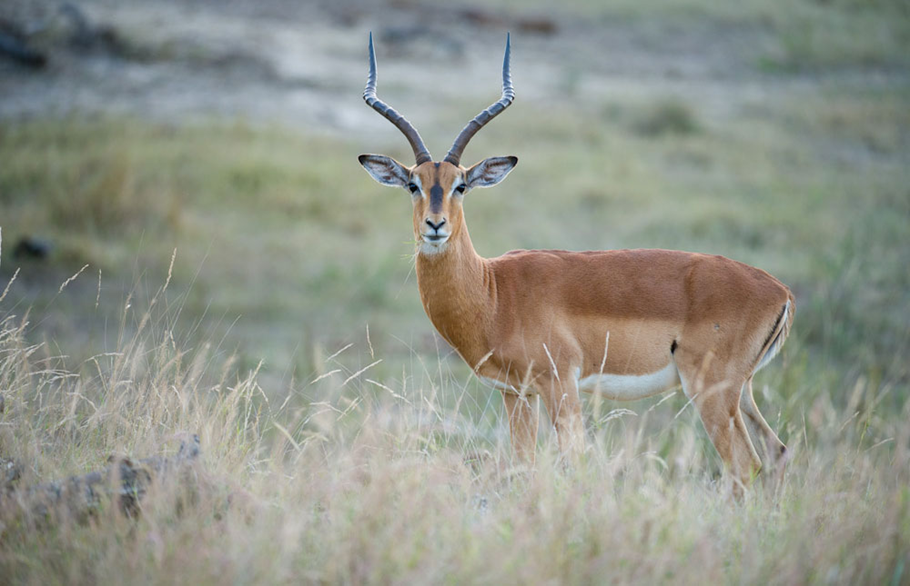Research
Elephants in the System
Synergistic influences of elephant and other large mammalian herbivores on the structure and composition of woody plant communities in Hluhluwe-iMfolozi Park, South Africa
A central issue in African today is the management of the African elephant. In many areas of southern Africa elephants, protected from poaching, are thriving and there are calls to cull them to protect mature woodlands. Although it is clear that elephants at abnormally high densities can have devastating effects on woodlands, at more normal densities, such as those encountered in most game reserves, it is poorly understood quite how elephants impact on woody vegetation directly and, through that, biodiversity in general. An increasing body of research has highlighted the marked impact other savanna browsers, such as impala, kudu, giraffe and black rhino, have on the woody vegetation at various life-history stages of the plants. The aim of this project was to investigate, and try to quantify, the role of other browsers, in relation to that of elephant, on the long-term structure and composition of woodlands.
The project was carried out in Hluhluwe-iMfolozi Park, South Africa, a 90,000 hectare reserve located in Zululand, KwaZulu-Natal, and the oldest established game reserve in Africa. Remarkably little research has been carried out on the habitat and woody diet of savanna browsers from the entire guild point of view. Over a two year period of repeated driven and walked transects, use of GPS/cell-phone collars on elephants and plant analyses, the project found that all guild members heavily overlap in their habitat use and, a novel finding, that they all utilise the same core, or staple, woody diet. These findings suggest that other browsers impact the same core woody species in the same habitats as elephant, implying that where their total population biomass levels are high enough, other browsers may, over the long-term, markedly reduce the rate at which seedlings and juvenile trees reach maturity. Consequently, over the long-term, their influence on woodlands may be highly relevant to woodland management.
Impala are the quintessential African antelope – well adapted to their environment, they can reach high densities in a wide range of localities. To quantitatively assess the impact of impala on woody seedlings, something virtually absent from the literature, six adult impala were collared with specially designed, light-weight GPS/cell-phone collars over a one year period. This enabled areas of high versus low impala density to be determined, via a GIS, and then the impact on woody seedlings in these areas was assessed with random quadrats. The results revealed and quantified the marked mortality impala can inflict on woody seedlings – something that had not been determined in a natural setting before.
Modelling of the project’s findings suggests that other, non-elephant browsers do indeed exert a major long-term effect on woodland structure and composition. This suggests that management wanting to preserve woodlands should manage the savanna browser guild as a whole, rather than, as at present, concentrating exclusively on elephant. Reduction in numbers of prevalent other browsers, such as impala, will reduce the long-term pressure on woodlands and thus the need to cull elephant. The concept of managing a whole guild, rather than focusing on its, from the human perspective, most prominent member, may well be relevant to ecosystems other than the African savanna.
Selected Publications
O’KANE, C.A.J., DUFFY, K., PAGE, B. & MACDONALD, D.W. 2013. Model highlights likely long-term influences of mesobrowsers versus those of elephant on woodland dynamics. African Journal of Ecology 52: 192-208.
O’KANE, C. A. J., DUFFY, K., PAGE, B. & MACDONALD, D. W. 2013. Effects of resource limitation on habitat usage by the browser guild in Hluhluwe-iMfolozi Park, South Africa. Journal of Tropical Ecology 29:39-47.
O’KANE, C. A. J., DUFFY, K., PAGE, B. & MACDONALD, D. W. 2012. Heavy impact on seedlings by the impala suggests a central role in woodland dynamics. Journal of Tropical Ecology 28:291-297.
O’KANE, C. A. J., DUFFY, K. J., PAGE, B. R. & MACDONALD, D. W. 2011. Are the long-term effects of mesobrowsers on woodland dynamics substitutive or additive to those of elephant? Acta Oecologica 37:393-398.
O’KANE, C. A. J., DUFFY, K. J., PAGE, B. R. & MACDONALD, D. W. 2011. Overlap and seasonal shifts in use of woody plant species amongst a guild of savanna browsers. Journal of Tropical Ecology 27:249-258.
-
 © Tarik Bodasing
© Tarik Bodasing -
 © Christopher O'Kane
© Christopher O'Kane -
 © Christopher O'Kane
© Christopher O'Kane -
 © Christopher O'Kane
© Christopher O'Kane





